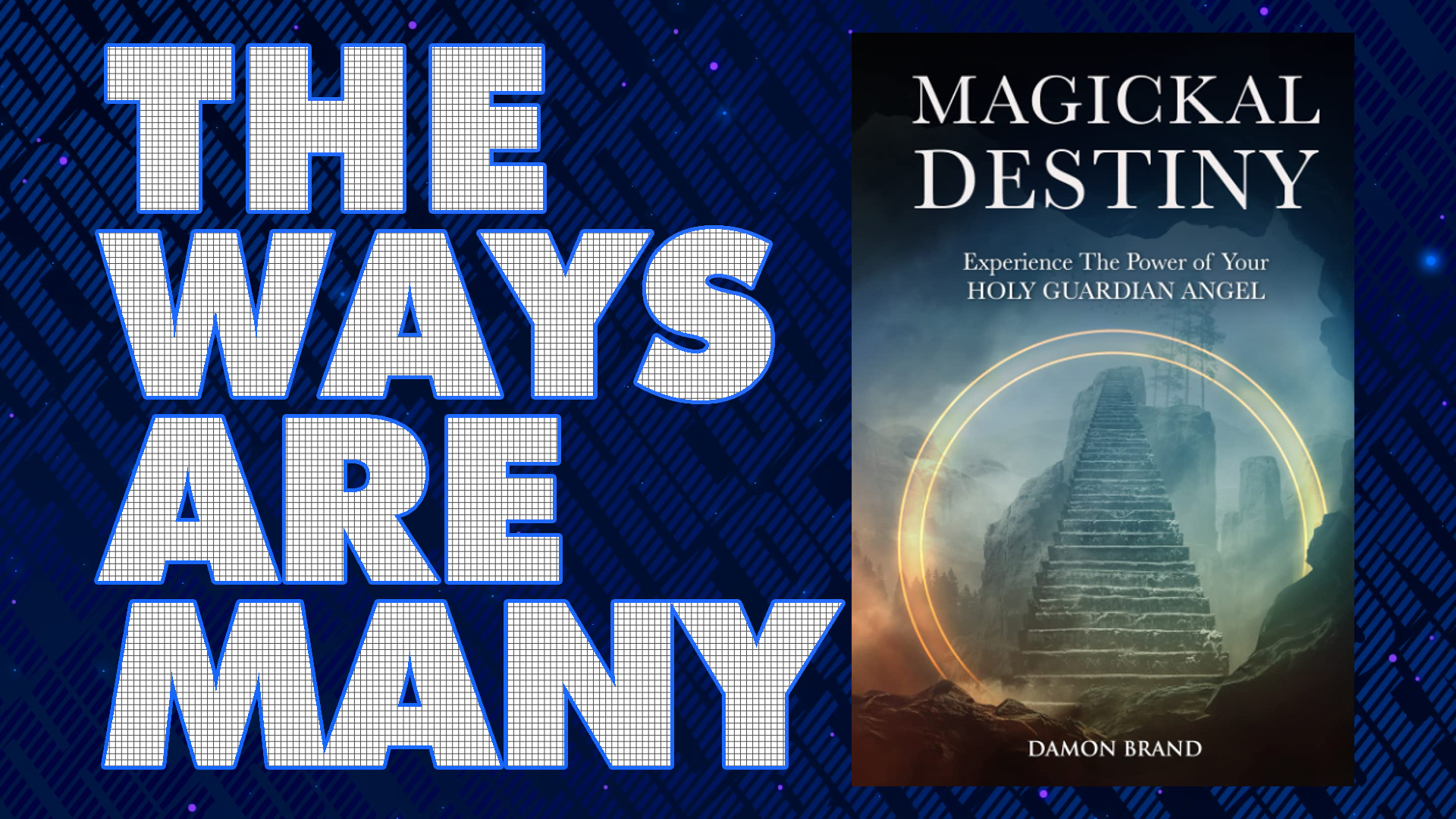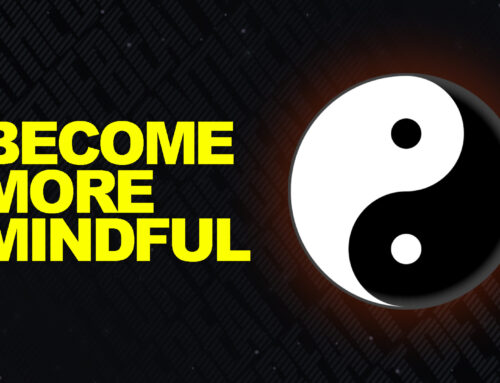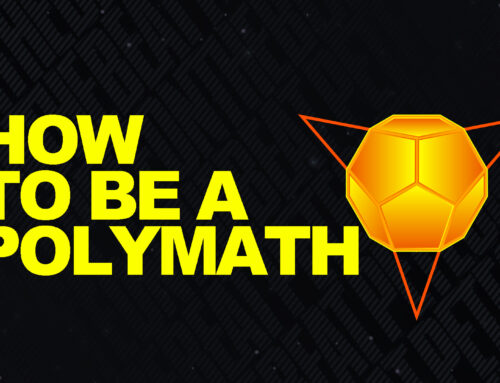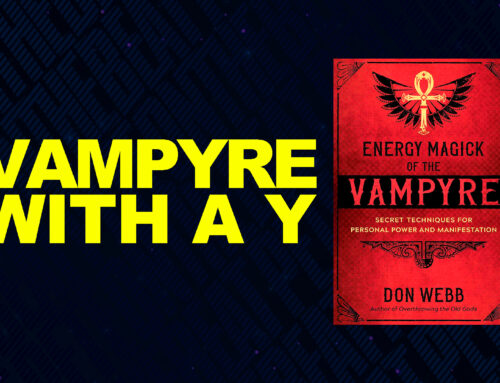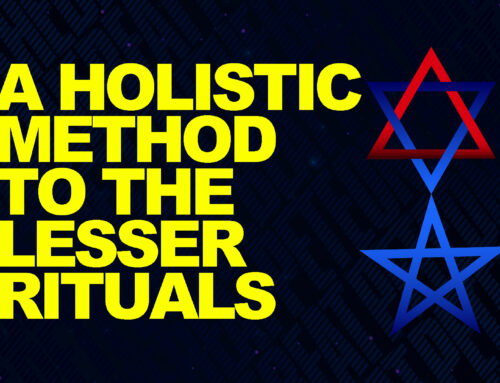Introduction and Disclaimer
This is an in-depth examination of Damon Brand’s Magickal Destiny. As a reviewer, I go through the entire book while quoting and discussing my favorite parts, and my comments are open to corrections. So let’s begin with chapter one.
Blissful Destiny
An introduction to the whole book, chapter one reveals that life is chaos, and magick is the instrument for taming that, choosing your destiny and what to happen or not. It warns that the book’s chief aim isn’t providing a set of rituals to mechanically repeat but to go deeper, tapping into the fundamental powers of your existence, integrating magick into your being.
“The title of this book is ironic because you aren’t seeking destiny that was laid in front of you by a higher power. You are choosing your destiny, based on what you discover to be the best way to live your life…”
P.8
Here the readers first encounter a few of the book’s key ideas, which are somewhat reiterated throughout the end.
“I often say that the Angel can come to you without any Magick… (…)
“Your Angel is present and only needs you to become aware of its presence. That is the only secret you need…”
“You don’t need faith or belief when you set out this journey to the Angel…”
P.10-13
The Offer
Referring to an article by another GOM author, Adam Blackthorne, this one begins by regarding problem-solving and changing your destiny as magick’s primary purpose. It further explains that exceptional efforts and talent can still be wasted without magick.
“…no matter how hard you work, without magick, you can be disadvantaged. As he (Adam Blackthorne) put it, “Great artists remain undiscovered. Brilliant scientists fail to get a grant. The love of your life hurts you more than you believed possible. And plain old bad luck can kick you in the teeth over and over again. Life is random and chaotic unless you tame the chaos. If you believe in magick, you have a way…
P.15
Later the section explains that the outlined methods are perfect for (both) discovering the mysteries of life and solving problems. And an open mind and not faith and belief are all you need to use them.
The Connection
Revealing that your own sense is the best device proving your Angel exists, here, Brand encourages using the methods to become an authority of your reality. He elaborates on the notion that when attempting to connect with it, the Angel makes even greater efforts to communicate with you.
“When you begin this work, it is not only you that’s taking part in the magic. As soon you begin, the Angel senses your desire for contact and will reach for you, empowering and supporting your efforts…” (…)
“Your Angel is not hidden behind a veil of occultism. Your Angel is and always has been involved with you and your life…”
P.24
Discovering the Angel
Another of the book’s key ideas is that there are many ways to attain Complete Contact. Based on that, Brand gives examples of different translations and adjustments of the original Abramelin operation and the bornless ritual, which essentially are modified techniques for controlling demons and exorcism.
Although vastly different, those methods proved “useful” to many people. Activating the reader’s common sense, this inspires asking: “How could that be possible if there’s only one way to achieve the goal?” Тhe answer to this question is found on page 31.
“What I eventually took from Crowley is that the Angel is yours, and you don’t need any ritual to connect with it, but magick can and will aid your efforts to make contact…”
p.31
The same chapter marks that the initial translation of the Abramelin prescriptions was full of errors, and many of the instructions are ridiculous, especially to modern people. This includes changing your clothes only once per week, not practicing over fifty, and never mixing women with magick.
Using this as a segue, Damon Brand addresses the still existing authoritarian rigidity in modern occultism and how certain people discredit the validity of the human experience by claiming their way is the only way, while that may be objectively incorrect.
He also explains that many people who aren’t practitioners sense the HGA in various ways. This reminds me of some new thought teachings and, of course, Crowley’s saying that the HGA communicates with people of art via their works and craft. It also reminds me how Phylis Secler achieved her 5=6 quite unconventionally.
“Everyday human experience has to be relevant, if not more relevant, than the writings of haughty occultists.
What you experience is “real,” and you should not let anybody tell you that your discoveries are in any way false…”
p.34
The author emphasizes that the different traditions have their devices for connecting with the Angel based on origins, folklore, and beliefs. And how disregarding is extremelly narrow-minded and cynical. Lastly, chapter one notes that our imagination and senses play a huge role in how we’ll experience the connection.
The Reality of Contact
Stressing that a non-magickal life could be a real struggle, this chapter clarifies that uniting with the Angel by no means eliminates the need to handle daily tasks. On the contrary, it boosts the efficiency of your workings to an unimaginable degree.The greater familiarity with the Angel also results in more substantial ease in obtaining the desired. Hence, the more you advance, the less magick you need to perform.
The author emphasizes that the different traditions have their devices for connecting with the Angel based on origins, folklore, and beliefs. And how disregarding is extremelly narrow-minded and cynical. Lastly, chapter one notes that our imagination and senses play a huge role in how we’ll experience the connection.
I believe it is safe to say that the connection with the Angel makes magick work like it’s on roids. Or, more magickally said, it grants way higher probability shifts. It also expands horizons, empowering you to embark on new and previously impossible journeys.
“You may wonder if you will become spiritually strange and obsessive or in some way bound to the bidding of your Angel. This cannot happen. The Angel will never force you to do anything or try to change who you are. It may encourage you down paths that were once too challenging for you, but you are the one who chooses where to go…”
P.39
The same part also teaches that “good and bad things” happen regardless of your workings and pursuit of the Angel. Each person’s life contains those even when they aren’t involved with Magick, and therefore it is reasonable to not attribute everything to it.
The Reality of Doubt
Sharing an exciting episode of his life, here, the author begins with the fundamental rule that to be efficient, Magick doesn’t have to be complicated. Although regarded as ineffective, often, the “simplest” and most doubtful techniques deliver starling results. Next, the author challenges the notion that a strong connection with the Angel inevitably results in your life falling apart.
“Having guided people through this work, I have never seen a slither of evidence for the Angel causing disruption. It is true that when you do this work, you are woken from the slumber of your ordinary life, you see things in a new way, and often, you decide to make changes. The person you are now may well be stripped away to reveal your truth, but there is no magick in this book that is designed to destroy or harm you. And there’s never an outside force that brings disruption upon some sort of trial. It will be a spiritual journey, but not one that dismantles you or your life…”
P.45
Brand clarifies that the only real disruption comes from other people’s doubts and disapproval. Therefore, keeping secrecy might be appropriate when on this journey. Overcoming personal doubts and skepticism is healthy and essential and promotes development. Actually, this is one of the mightiest tactics in and of its own. On the other hand, fighting others’ opinions wastes resources and takes us out of the path.
Any method could be criticized, and any can work. No two experiences are alike, and depicting one could be tricky. For this, not having preconceived notions or expectations but knowing your perception of the Angel will evolve is the right approach to have.
The Role of Intention
Building on the former, this section debunks the myth that the Angel is somewhere far beyond, so the aspirant has to overcome a series of complex challenges. The author explains that the Angel is available here and now. What is required isn’t performing impossible feats but understanding this and increasing awareness of its presence and guidance via appropriate training. Unlike any other, this training isn’t about acquiring a skill but rather making contact possible by cultivating and channeling intention.
“The mistake we make is assuming that contacting the Angel is a skill, like learning to juggle or read music. The reality of contact is not about acquiring skills or doing new things, so much as directing your intention and then allowing contact…”(…)
P.52
“Many people resist this idea, thinking there must be a secret way you unlock the Angel. Although many powerful methods are used later in the book, tapping into secret magick through the use of sigils, it’s vital to know that any method can work…”
P.52
Through this, Damon Brand unveils to his readers the importance of intent in everything, not just magick. Besides altering reality, magickal intention can convert mundane activities into magickal acts.
As reiterated in classic self-help, it’s really our intent and not tools that achieve or not achieve the desired outcome. The stronger this is, the greater chances we have to succeed. Also, more options and devices we find helpful as we do this. This doesn’t imply using willpower and tiring efforts; it means operating with utmost certainty that our actions will produce the desired result and expecting success even when most skeptical.
Receiving the Angel
Letting the Angel “make itself known” requires tunning down the ever-present noise of the outside world, minimizing distractions. Instead of retrieving from life and becoming ascetics, this means dedicating a daily time to inner peace, quietude, and finding beauty and splendor even in their absence.
(Perhaps the latter is similar to some exercises for adoring the Thelemic goddess Nuit.) The key is to become open to the Angel, practicing what the author calls “passive attention.”I believe this is very consistent with one of the gold nuggets of Mystical Qabalah. Namely, as people living in this global Western culture, we demand more life, not abstaining from it.
“You might sense your Angel while out for a walk, or when stacking the dishwasher, or when taking a shower. The mundane is where we live most of the time, so be prepared for magick to intrude on those ordinary moments of existence…”
P.60
Learning how to disconnect and include such periods is vital to succeeding. Introducing those empty spaces declutters the mind and allows being mindful of the moment and the environment. Said differently, to be “here and now.” We can only change the world when we are fully present in it.
The Seven Protocols
Here the reader learns that the provided system isn’t traditional rituals but protocols for strengthening being and perception. Rather than advocating a specific timeline or manner of approaching them, Brand emphasizes that it would be best to utilize them in your own way and pace.
The reason is that everybody is in a different place and situation, having their own unique stories. And through that, the author further prepares the practitioner by helping them assume the proper mindset.
“I believe you should go into this knowing something can happen on day one while also knowing that it will take as long as it takes. There is no predicting what will happen when because everybody starts from a different place, and everybody has a different journey…”
P.64
This chapter also emphasizes intention’s importance and helps alleviate anxiety and doubts regarding results. It affirms that it’s alright to change your approach to the provided techniques with time. Letting that happen, you can use it to indicate the exact kind of magick you might need the most.
“You will learn to trust your intuition regarding what magick you require. Try to get used to the unstructured nature of this method. But be willing to spend weeks, or more, with a Protocol, if that feels right…”
P.66
Next are general guidelines on using the protocols most intuitively and enjoying the fruits of your labor. One of them is that: although taking breaks from this system is okay, total commitment and perseverance are always more beneficial. Another to arm yourself with patience because, unlike some ceremonies and initiations, this isn’t a one-time peak experience but something to benefit your whole existence.
“Be prepared for this to take time, and remember that you are not seeking a golden moment of revelation but something that brings benefits and power for the rest of your life…”
P. 66
Protocol One: Intentional Opening
The most important (of them all), Protocol One combines a welcoming for a hug and gathering maximum intent. Although incredibly simple, it is said that it’s perfectly sufficient to establish a contact in and of its own.
“Protocol one is a direct act of intention, reaching out to sense the Angel, physically, emotionally, mentally. In many ways, this is the most obvious method and the one you have already tried…”
P.71
Brand explains that brief instructions are superior to details because they allow answers via first-hand experience. Further challenging the notion that to be effective, magick must be complex, he re-assures that the Angel is far closer than expected, and it’s a matter to become quiet, sensitive, and maximally receptive, “noticing whatever you can.”
Protocol Two: The Angel’s Support
Rather than a technique, the author outlines a few critical points in this one. Some of that includes:
Eliminating tension and expectations increase workings’ efficiency. Your Angel’s help shouldn’t be used for stuff you really don’t need. And it is crucial to differentiate superficial from genuine desires appreciating what you have.
Damon Brand describes that using powerful magick for everything and anything might not be optimal, and often using simpler or even no magick is the better choice.
“If there’s a problem you could solve with a simpler magick, use that for now. And if you could solve a problem without magick, try that. You may find that the Angel begins to bring unexpected help when tackling these other need but don’t expect it at this stage. For the Angel’s help, look to problems that seem impossible to solve in any other way…” (…)
P.82
The trick to getting this right is that – even though you are sincerely asking for help – you shouldn’t expect results…” (…)“It is true that magick works best when you lose the feeling of urgency…”
P.82
Protocol Three: Active Intention
Elaborating on the notion that as long as loaded with intent, any simple repetitious act might be magick, this chapter gives various examples to help achieve that in your day. One of my favorite, this section explains the importance of sticking to the same thing, whatever that is.
“I suggest starting small and building this up. I know some people have created physical gestures, using their bodies or arms (in something akin to yoga and Tai-chi) that they perform for five minutes a day. That works. So does washing the dishes by hand, if you remember you are not washing the dishes but performing an action with the intention of reaching your Angel…”
P.86
The author notes that since bringing the Angel to this world is the aim of the work, the ordinary should be part of it as we adjust it with intention. He also says that chosen action may change frequently or with time.
Here I’d like to comment that turntablism, bodybuilding, music production, and of course, writing had an incredibly magical and transformative effect on me years before I started practicing. As noted in my book, I also felt connected to something higher when doing any of those, and to me, they provide more than some rituals I found in books on magick.
Protocol Three is also perfectly applicable without direct physical action and/or tremendous focus. Along with this, Brand hints into constructing rituals to feel appropriate to you. Yet, it’s best to utilize it alone and uninterrupted. Luckily for me and everyone doing the same, eating OMAD in piece and solitude gets the job done just as well. More about the OMAD plan can be found in my book — OMAD GAINS Practical Self-Help and Natural Bodybuilding.
Protocol Four: Releasing the Pain
This uses your pain as a tool for communication getting closer to the Angel. Although, not guaranteed the potential benefit of that is the relief of various kinds of pain anyone carries within themselves. One way to perform this is by using words, another to test things and find the most natural way through personal experience. Whether or not some ease of relief is obtained isn’t as important as the act of performing the Protocol.
Protocol Five: Perspective
After discussing some dynamics of imagination and how it’s part of anyone’s life, this section outlines a rather unique exercise. It employs the act of pretending and perhaps some dose of auto-suggestion to unify you with your Angel, meshing your reality with its.
“The aim of this Protocol is to feel at one with your Angel. You achieve this by briefly pretending that you are the Angel, and you see yourself from the Angel’s perspective…”
P.96
Interestingly, your vision’s clarity isn’t of that importance. Instead, the author offers to do your best in wholly experiencing being the Angel, as you look on yourself with great love and compassion. This is what the Angel feels, so assuming its perspective aligns you with its being.
Verbalizing the technique by saying some kind words to yourself is also encouraged, as long as producing facilitating effect. Once mastered, this Protocol finds application in various emotionally challenging situations, yet waiting for them isn’t required to use it.
“The beautiful irony of this Protocol is that by pretending, you make something much more real, and I believe that for many people, this imaginative work will help bring on the greatest alignment with the Angel…”
P.98
Although not all people will like it, (I believe) we should consider many of what the New Thought, New Age/Law of Attraction folks preach.
Protocol Six: Recalling
Stressing the importance of appreciation and being present and mindful while addressing how many people (I’d say particularly in the self-help world) get those concepts wrong, here, Damon Brand elaborates on the role our past plays in our lives.
“Thoughtful reflection is valuable, whereas cycles of rumination, regret, and shame are not helpful.” (…)
“For artists, letting the mind wander, allowing yourself to ruminate, to think, to imagine, and to explore your past is vital. By knowing what led you to be who you are now, you are more able to be present, more able to create. A similar process can work with magick. How you came to be who you are is a mysterious process…”
P. 101-102
Presented in three versions, protocol 6 is about examining pivotal life moments, synchronicities, and other things from the past. First, you do that as yourself. Second, and similar to Protocol five, you do so from the point of the Angel. The key isn’t obsessing about what could have been better, nor reminding of traumatic experiences, but connecting with the Angel by increasing self-knowledge. And this, I believe, might be somewhat similar to a method outlined in Don Webb’s Essential Guide To The Left-Hand Path.
“You should know that you are not daydreaming about the past or engaging in wishful thinking. These three versions of the Protocol are magickal processes that connect you to the feeling of change, to the knowledge that choice is often available. (…)
You are not meant to sit there feeling proud, ashamed, or dismayed about your life. You’re just reviewing some key moments and knowing that the Angel has been there, caring for you, whatever you did, and whatever happened…”
P.105
Protocol Seven: Manifesting at Will
Reminding to not have expectations but to do the work as pure-heartedly as possible, Protocol seven is mostly about making conscious efforts to change something meaningful. Тhe author explains that manifesting at will means causing change through an act of decision; the challenge is to do that with conviction but no expectations.
The Quest For Contact
Noting some reasons people may undertake this kind of work, this section reiterates critical points. One is that seeking a climatic and spectacular revelation moment isn’t its aim. Another is that achieving complete contact shouldn’t be paired with all sorts of ordeals, nor should it require performing seemingly impossible feats, disconnecting the aspirant from life. Here, the author gives the reasons behind the order of the protocols and sigils, the optimal ways of using them, and a little background on the Enochian alphabet.
Lastly, the book concludes with some additional thoughts on incorporating this method in your life and some gold nuggets to wrap up everything said. My favorite is that complete contact isn’t something that happens once and remains static but a continuously evolving process only the aspirant can sustain.
“If you have already achieved Complete Contact with your Angel, the journey is far from over. As you begin to communicate, you will see how much further you can go, and you will also know that I cannot lead you there. The connection will continue to evolve if you continue to nourish it. Maintain contact with your Angel, and the connection will always reward you…”
P.137
Final Words
Challenging dogmatic notions and elitism, Damon Brand’s Magickal Destiny provides a refreshing perspective on the most key subject of whole Western Tradition, the HGA. Using plenty of evidence and common sense, the book shows that the ways and methods could be many as long as having the right intention and mindset. It is eloquently written and concise. And I believe it offers enlightening insides to the modern practitioner.
Thank You for your time.
- The Power of Mindfulness Meditation - May 1, 2024
- An Autobiography of Trauma Book Review - April 23, 2024
- Reflections on Being a Polymath - April 12, 2024


